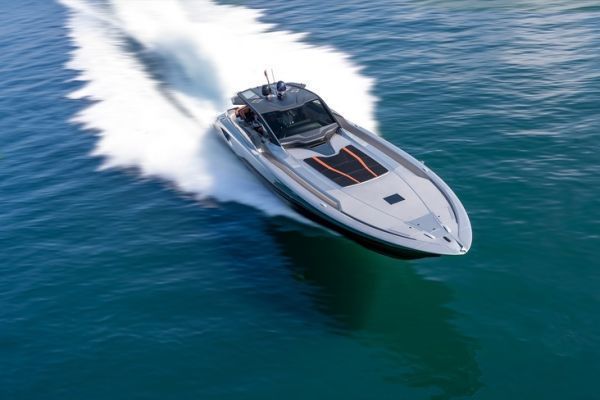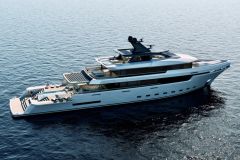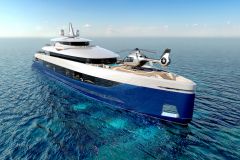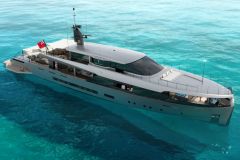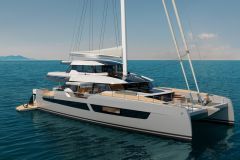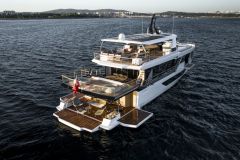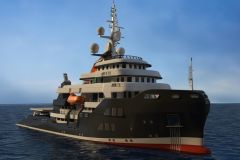A limited series of 10
Bolide 80, the first Hyper Muscle Yacht in a forthcoming range of "bolides de la mer", has just left Victory Marine's hangar in Pisa. Designed by Victory Marine founder Brunello Acampora and his team of designers and engineers, the boat was built entirely in-house. The boat is now ready to be finalized and tested once its propulsion system has been commissioned.
Bolide 80 is the first Hyper Muscle yacht in a limited series of 10 numbered units. In all, the range will include several limited models from 60 to 170 feet. The second model is the Bolide 170, which we have already presented to you .
Built in carbon, it is manufactured using high-tech materials such as carbon fiber produced by Microtex and customized structural cores specially developed by Diab.
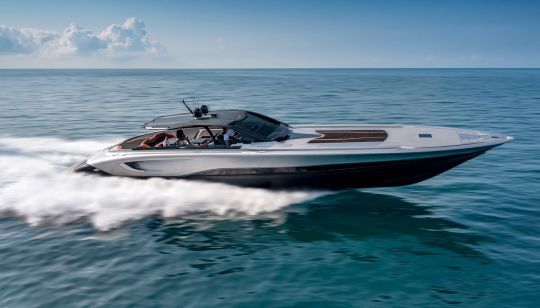
More than conclusive sea trials
Massimo Bruni, Technical Director of Victory Design comments: "The boat has exceeded all project objectives, both in âeuro top speed, reaching over 70 âeuro knots, and in cruising and intermediate speed. Evolution tests confirmed the boatâ??s perfect handling and total control at all speeds, thanks to the innovative rudder system with dihedral and active control supplied by Xenta. The unofficial record for the fastest yacht in the world was achieved immediately and effortlessly!"
The design firm reports that the "multi-step" hull made in Victory generates extremely low frictional resistance during navigation, gliding over an emulsion of water and air, as no other hull can do at over 70 knots, not even with waterjets. This speed was achieved with 15 technicians on board, and two pilots sitting in the cockpit in front of their laptops.
During sea trials carried out between Livorno and Marina di Pisa, the builders observed a one-third reduction in fuel consumption, in liters per mile, compared with a boat of the same size and speed. Consumption is around 10L/mile at cruising speed. The manufacturer also points out that the greater the speed difference, the lower the fuel consumption. At 50 knots, Bolide 80 consumes half as much fuel as a flybridge motor yacht of the same length sailing at 30 knots.
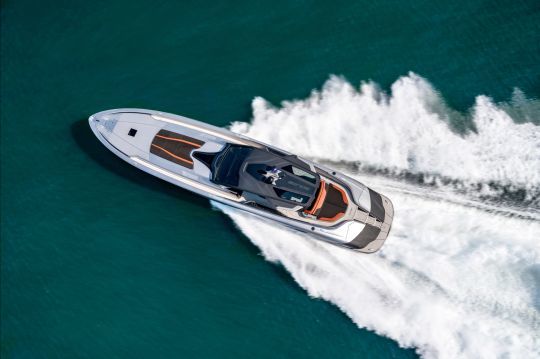
Rudders that make navigation easier
Steering is made easy by the two independent rudders, which function like foils, allowing the pilot to manage the boat safely even at high speeds. Bolide 80 finds its ideal configuration thanks to Flexitab & TS's patented T-Drive propulsion system with compensating flaps. The three surface propellers combined with the system automatically and constantly find the ideal trim angle, thanks to special cylinders tested in motorboat competitions.
The manufacturer reported that its tests demonstrated excellent seaworthiness and the ability to travel in absolute comfort and safety, both at a cruising speed of 55 knots and at a top speed of 73 knots with the three MAN diesel engines.
A sleek, sporty silhouette
Bolide 80's silhouette is sleek, sporty and refined. The 24-meter-long yacht is the first in the range to be built entirely in carbon fiber and to feature 6,000 horsepower. The sinuous shape of the rigid coachroof has been designed to reduce aerodynamic drag and protect the pilot from wind and sunlight while sailing. Two recessed gangways provide safe passage for the crew.
Top-of-the-range, personalized interior design
The interior design is the result of collaboration between architect Stefano Faggioni and Victory's in-house design team. The proposed layout is entirely personalized, with well-rationalized interior spaces furnished in a simple, modern style and with particular attention to privacy. The materials chosen are of the highest quality: carbon and leather made in Italy, natural fiber fabrics such as linen, silk and cashmere.
Access to the interior is via two symmetrical companionways leading to the cockpit. The galley is located on the port side. It's an elegant technical space, with contrasts of matt leather, natural teak and cognac-colored lacquered elements. The carbon of the hull is left exposed.
The galley leads directly to the owner's cabin, equipped with a comfortable queen-size bed, wardrobe, desk and electric control panel, as well as a private bathroom. The kitchen also communicates with the bar area. The starboard companionway leads to a private saloon that can be converted into a guest cabin with TV and en-suite bathroom, which can also be used as a day toilet. The partitions are covered in ivory-colored leather, contrasting with the matt black lacquered side walls and ceilings. In the bathroom, the vanity unit is made from cognac-colored lacquered marble.
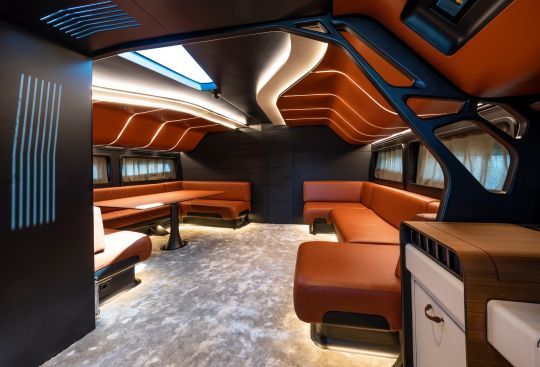
From the main companionway, to starboard is a chart table equipped with two monitors and an interactive screen for general control of all onboard systems. Opposite is a bar equipped with a refrigerated wine cellar and sink, and aft is another liquor bar integrated into the ivory leather-covered bulkhead.
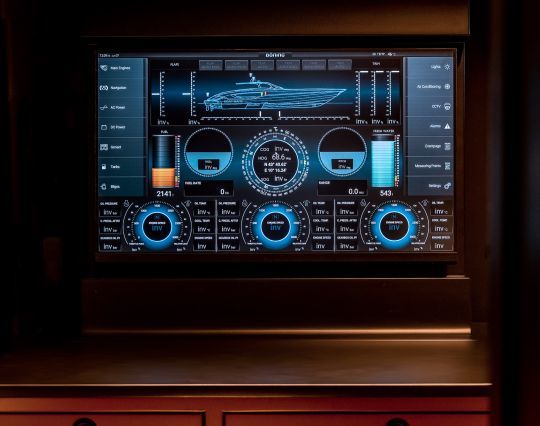
In the central area, the most comfortable on the boat, there is a symmetrical C-shaped double settee. On the starboard side, it can be used for socializing, and on the other side for lunch. The transverse bulkheads bordering the galley aft and the owner's area forward are not perpendicular to the axis, but to the sides of the superstructure, to energize volumes and optimize available space, particularly forward. The dominant colors of this space are matte black for the structure of the furniture and the hull, which remains visible.
At the bow, the owner's area is accessed via a sort of vestibule that acts as a dressing room, comprising two side cupboards, a central sideboard and a bench seat. This piece of furniture is designed as an open piece of luggage, a trunk, which can become a piece of furniture when anchored. In the owner's bathroom, a cognac-lacquered built-in cabinet integrates a marble sink, a toilet, a carbon bidet and a shower with a teak side seat. The bed in the forward owner's cabin appears to be suspended, with a base formed by two drawers and wrapped in a avoir leather and nubuck cover. There are also two symmetrical dressers. A pearl gray silk carpet completes the ensemble.

 /
/ 